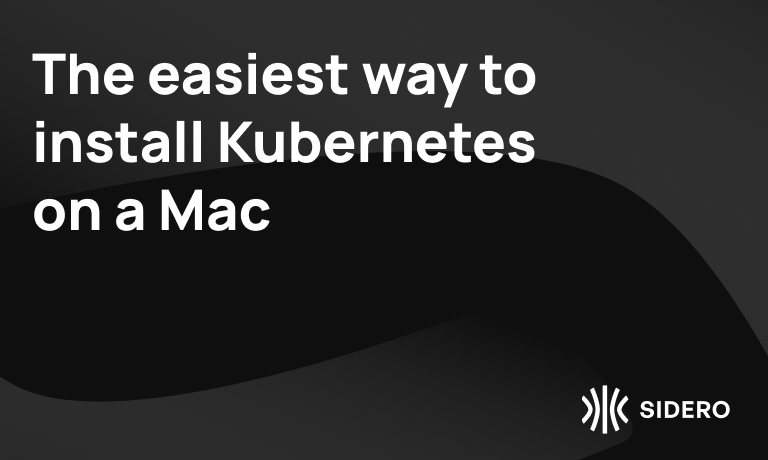Building edge infrastructure that works: A Q&A with TrueFullstaq

While traditional infrastructure relies on consistent connectivity and centralized management, edge deployments must operate in constrained, distributed, and often unpredictable conditions. In this Q&A, Merijn Keppel, Principal Consultant at TrueFullstaq, breaks down what companies get wrong about edge computing and how teams can avoid costly missteps.
What are the most common infrastructure challenges organizations face when deploying applications to the edge?
Edge deployments often introduce complexity that centralized teams aren’t prepared for. Data persistency becomes especially difficult in semi-airgapped or fully disconnected environments, where assumptions about continuous connectivity break down. Network integration is another frequent headache, as trying to hook into 2nd or 3rd party networks adds friction, especially when standards and controls vary. The decentralized nature of edge systems also creates operational overhead as, instead of managing a few centralized clusters, teams now face dozens or hundreds of mini-environments, each with its own lifecycle, maintenance needs, and failure points.
Each industry will also have its own challenges.
In industrial automation, legacy hardware is common, network constraints are harsh, and downtime can halt physical production lines and lead to costly delays or product loss. These environments often require deep integration between software and come with strict safety and compliance standards.
In manufacturing, real-time processing with microsecond-level latency requirements is critical. Integrating operational technology with IT systems remains a major challenge, especially when edge devices must interface with legacy industrial protocols.
In retail, secure processing of payment information is essential, with PCI compliance as a baseline. Edge nodes handling transactions must enforce strong security frameworks, encryption, and auditable logging. In healthcare, patient data must be processed securely at the edge, requiring encrypted storage, secure transmission, and detailed access logging.
In the energy and utilities sector, edge infrastructure must meet extremely high availability and security demands. Remote locations with limited physical access add further complexity. A strong example is Vattenfall, which runs Kubernetes in wind turbines and requires ruggedized Onlogic Intel NUCs to operate reliably in such harsh environments. Onlogic’s presence as a regular sponsor at EdgeCase conferences highlights the real-world demand for robust edge hardware in critical infrastructure.
How do edge environments differ from centralized cloud infrastructure?
In edge scenarios, infrastructure is tightly coupled with physical services. For example, industrial machinery, autonomous vehicles, or medical devices are bound to specific latency or location requirements. When milliseconds count or the site is offline, you can’t rely on distant cloud regions. A logistics center might stall because they can no longer scan and route packages, or a game server might drop players’ connections and cause lag. This creates pressure on both developers and operations teams to think differently about reliability, responsiveness, and local autonomy.
What’s the biggest mistake companies make in regards to their edge infrastructure?
Many organizations underestimate how difficult it is to integrate new tools with existing systems and workflows. Legacy processes, especially in manufacturing, energy, or logistics, are not easily rewritten as they are often designed for specific, sometimes proprietary, environments with minimal abstraction. It is especially hard to decouple or refactor for cloud native patterns like Kubernetes.
Organizations can also place too much focus on the modernization of the tech stack itself, forgetting the cultural and process shifts that should accompany it. When teams are not aligned and trained to think in cloud native, distributed terms, they may end up building edge deployments that are brittle, hard to scale, and overly reliant on centralized patterns. They may assume persistent connectivity to cloud APIs or build workflows that break down in low-bandwidth or offline conditions.
What kinds of issues have you seen arise from legacy systems trying to expand to edge?
Legacy applications often rely on proprietary protocols or stateful architectures that assume persistent local storage, static IPs, and long-lived connections, none of which aligns with Kubernetes orchestration and can be difficult to break down into small, simple components. This can lead teams to rewrite core logic or add layers of complex workarounds, which only makes the infrastructure more difficult. The lack of a solid Layer 7 abstraction, such as an Ingress controller, makes it difficult to implement the proprietary protocols.
Many applications are built to run in a single place, rather than a distributed, autonomous environment, making them hard to scale, update, or debug when pushed to the edge.
How should teams manage configuration across distributed Kubernetes clusters?
Consistency at scale requires automation. GitOps, when implemented properly with signed commits and version control, allows teams to manage desired state across all nodes in a traceable and secure way. Without it, every manual tweak becomes a liability, and drift becomes inevitable. This also helps future-proof architecture. A consistent GitOps model and rendered manifest pattern ensure flexibility without chaos. When paired with the operator pattern, your systems become resilient and adaptable, capable of evolving alongside new edge demands, hardware changes, or regulatory shifts.
When it comes to consistency across edge nodes, things often get tricky. Edge environments are notoriously fragmented, with diverse hardware, unreliable connectivity, and limited on-site resources. Achieving consistency requires automation from the very first boot. Zero-touch provisioning–for example, with the help of Omni and Talos Linux—makes this possible, eliminating manual steps while enforcing secure, declarative configurations.
Automation is key to coping with the scale and fragmentation. During CI, rendering static artifacts like Kubernetes manifests or Talos Linux configurations ensures your infrastructure behaves predictably when applied. Operator patterns that consume abstract resources can also allow for self-healing components, given that the business and failure logic are mature enough. For example, a factory-floor edge node running a sensor app crashes. If an operator detects this and spins up a fresh instance locally, you can avoid downtime if the recovery logic knows how to do this safely.
What metrics or indicators should companies monitor to know their infrastructure is working?
Distributed systems require a different monitoring mindset. Each edge node is a mini failure domain, and loss of state control in one region may not affect another, unless it goes unnoticed. Any loss of control should trigger immediate alerts. To manage a stateful component like etcd on an edge node, it’s best to use a controller that operates based on etcd’s health metrics. This same approach can be applied to any technology you choose to run in its place.
How does TrueFullstaq help customers navigate these challenges?
We’ve found that edge challenges often begin at the organizational level. Teams need help understanding their options and how to align their processes with cloud native solutions. We support clients with a clear roadmap to improve and launch their technology platform, and to define the next phases towards optimal performance. Where necessary, a tailored team is assembled and deployed. Knowledge gaps within the client’s organization are identified and bridged to ensure a future-proof and sustainable continuation of their platform journey.
Never miss an update! Sign up to receive our monthly newsletter.
Want to know how others are tackling the complexity of edge deployments? TrueFullstaq works closely with teams to modernize infrastructure and align processes with cloud native practices. Find out how TrueFullstaq can simplify your edge operations.


